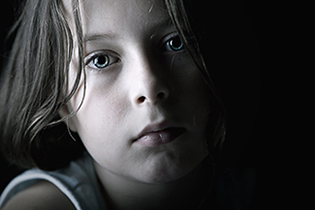 The cost of abuse to a child lasts a lifetime, for individuals and our country as a whole.
The cost of abuse to a child lasts a lifetime, for individuals and our country as a whole.
In a study of 17,000 adults, those abused as children were more likely to become suicidal and have heart disease, cancer, chronic lung disease and liver disease; twice as likely to be smokers, severely obese and to become alcoholics; and three times as likely to develop a drug addiction.
Of children abused, 22 percent have learning disorders requiring special education, and 27 percent become delinquents, compared with 17 percent of children in the general population.
In 2007, Stanford University researchers found that children suffering post-traumatic stress disorder and exposure to severe trauma actually have smaller brains. Severe trauma includes parental homicide, sexual assault, sexual abuse, school shootings and ongoing community violence. Researchers found a nearly 9 percent reduction in the size of the hippocampus, a horseshoe-shaped sheet of neurons that controls memory and emotions.
A study conducted in 2009 showed an increased risk of sexually transmitted infections in childhood abuse or neglect survivors tracked over time. In the same year, another study found, beyond the mental health impacts, childhood maltreatment reduces immune function, an effect that can linger long after the maltreatment has ended.
The cost to our country is approximately $124 billion annually, according to a recent report by the Centers for Disease Control and Prevention. And the estimated average lifetime cost per victim of nonfatal child maltreatment is approximately $210,000, in 2010 dollars.
That includes
- $32,648 childhood health care
- $10,530 adult medical care
- $144,360 productivity losses
- $7,728 child welfare
- $6,747 criminal justice
- $7,999 special education
Prevention of child abuse and neglect requires public education and a commitment from communities to provide emotional, social and financial support systems for families.
Research shows that investing in child abuse prevention programs yields a 19 to 1 savings over the long-term costs to society of child abuse. These programs include parent education classes, safety programs designed to make children less vulnerable targets for abuse and home visitation.
If your child is a victim of child abuse, or you need help as a parent, reach out to the Relief Nursery, a local non-profit committed to strengthening families and keeping our children safe.
